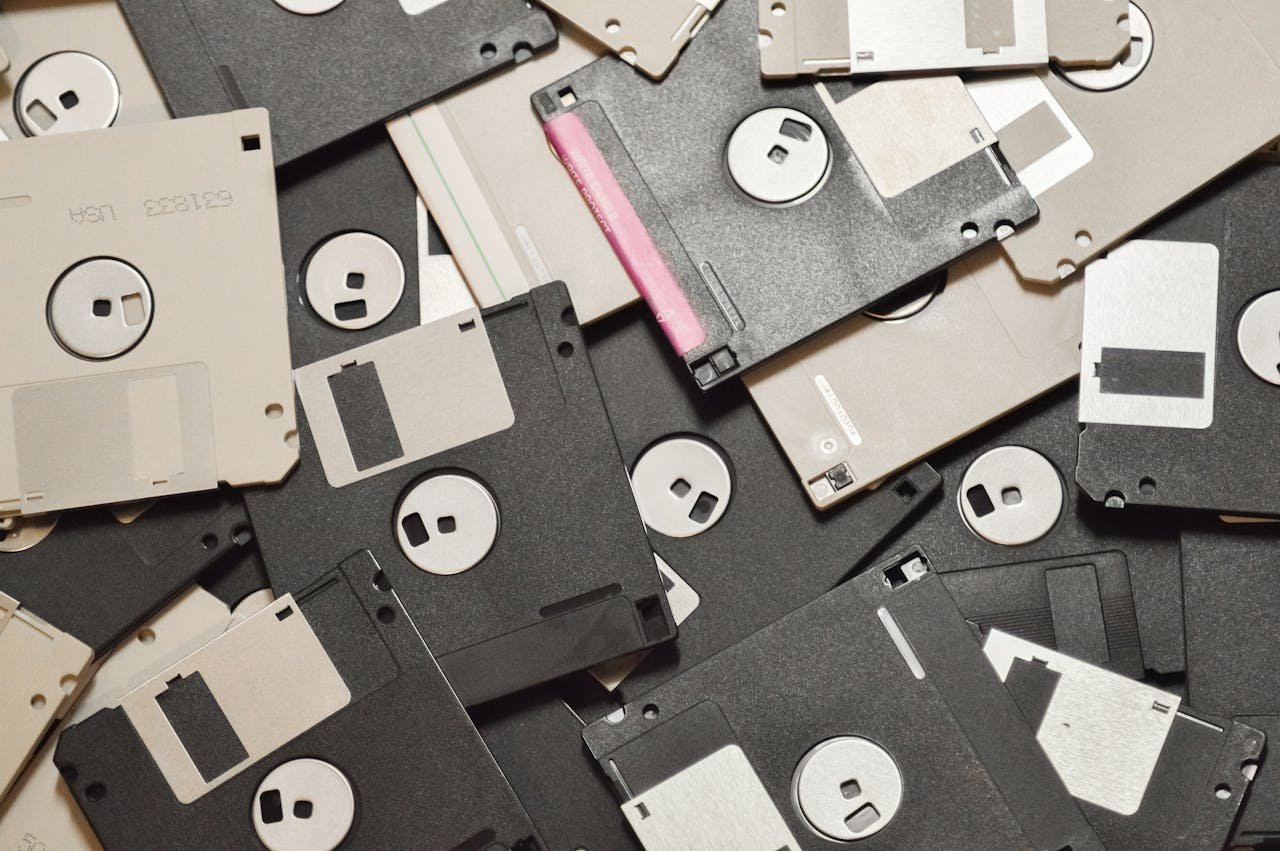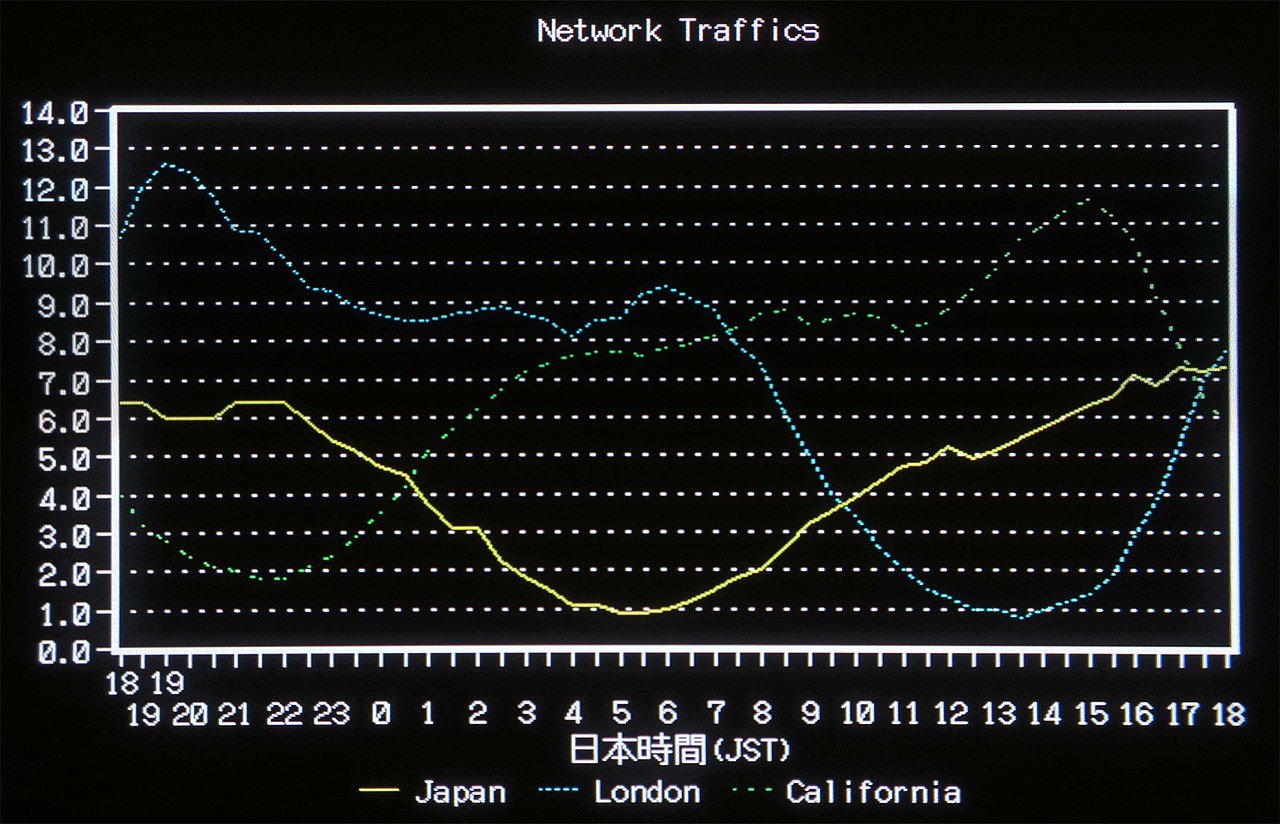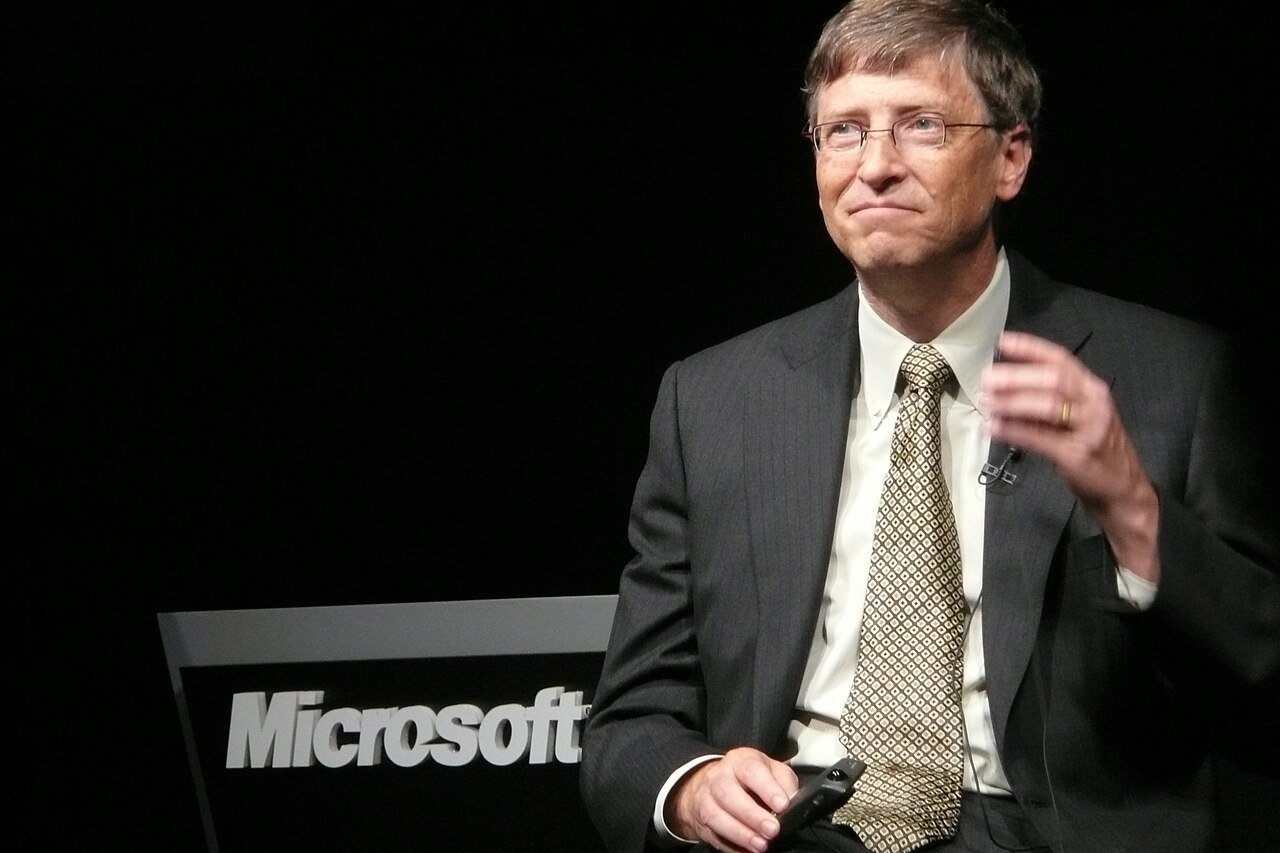In the late 1980s, an ambitious new operating system called NeXTSTEP OS quietly emerged and went on to influence the course of modern computing. NeXTSTEP was created by a then-ousted Steve Jobs and his startup NeXT, Inc., and although it never became a household name in its time, its innovations laid the groundwork for technologies we use every day. From the foundations of macOS and iOS to the birth of the first web browser, NeXTSTEP’s legacy looms large. This comprehensive look at NeXTSTEP will explore its historical significance, technical foundations, key features, influence on Apple’s future, notable software created on it, and its enduring legacy in computing history.
Table of Contents
Steve Jobs’ NeXT: From Apple Exodus to a New Vision
In 1985, Steve Jobs parted ways with Apple after a power struggle, leaving behind the company he co-founded. Determined to start anew, he founded NeXT Inc. later that year. Jobs’ vision for NeXT was to build a groundbreaking computer for higher education and research – a machine that would leapfrog existing PCs and workstations in power and software sophistication. He invested millions of his own funds and gathered a team of top engineers and designers to realize this vision. By 1988, NeXT unveiled its first product: the NeXT Computer, an elegant cubic workstation (often called the “NeXT Cube”) packed with advanced hardware and a brand new operating system, NeXTSTEP.

The NeXT Cube computer, introduced in 1988, showcased cutting-edge hardware and ran the NeXTSTEP OS. This black magnesium cube housed a fast Motorola processor, an innovative magneto-optical disk for storage, a high-resolution display, and CD-quality sound – all state-of-the-art for the time. However, the real magic of the NeXT Computer lay in its software: NeXTSTEP, the operating system that Jobs believed would revolutionize software development and user interfaces.
Jobs founded NeXT with the goal of creating an object-oriented software environment powerful enough to change how people wrote and used applications. He recruited key talent, such as Avie Tevanian (a Mach kernel developer from Carnegie Mellon University) and other brilliant programmers, to build NeXTSTEP from the ground up. The company initially targeted universities and labs, aiming to give students and researchers a “personal workstation” far ahead of what typical PCs or Macs could do at the time.
With significant investment (including backing from Ross Perot) and intense development, NeXT focused on two parallel efforts: designing advanced hardware and crafting an equally advanced operating system. By combining cutting-edge UNIX-based foundations with a sleek user interface and new programming tools, NeXTSTEP was poised to push the envelope of what an OS could be.
Technical Foundations: Unix, Mach, and Objective-C
One of the reasons NeXTSTEP stood out was its robust technical underpinnings. At its core, NeXTSTEP OS was a Unix-based operating system, built on the Mach kernel (a modern microkernel architecture) with components of BSD Unix. This Unix foundation meant NeXTSTEP inherited features like true multitasking, memory protection, and networking capabilities that classic Mac OS (of the 80s and 90s) lacked. In essence, NeXTSTEP offered the reliability and power of a workstation Unix machine under the hood, but with a friendly face for users and developers on top.
The choice of the Mach microkernel was bold – Mach enabled advanced research features (like distributed computing and multitasking) and was designed to be modular. Coupling Mach with BSD Unix provided a tried-and-true base for file systems, networking, and POSIX compliance. The result was an OS that could run multiple processes at once without the crashes or limitations that plagued simpler operating systems of the era.
Equally groundbreaking was NeXTSTEP’s use of Objective-C as its primary programming language and API framework. Objective-C is an object-oriented language that was relatively obscure at the time, but NeXT adopted it to build an object-oriented operating environment. In NeXTSTEP, all the user interface elements and system frameworks were written in Objective-C, making the entire platform one of the first to be truly object-oriented from top to bottom. Why Objective-C? In the late 1980s, C++ was still in its infancy and other languages didn’t offer the flexibility NeXT needed. Objective-C, developed by Brad Cox and others, added Smalltalk-style messaging to C, allowing for dynamic, extensible programs.
For NeXTSTEP’s developers, this meant they could create “software kits” – reusable libraries of objects – that made programming much faster and more modular. Objective-C in NeXTSTEP was a game-changer: it enabled developers to build applications by leveraging pre-built objects (for windows, menus, text fields, etc.) and extend them easily. This high-level, modular approach greatly sped up development compared to the norm at the time. In fact, the entire NeXTSTEP development environment was often touted as a decade ahead of other platforms in boosting programmer productivity.
By marrying a solid Unix core with an object-oriented language and frameworks, NeXTSTEP offered the best of both worlds. Developers could write software using high-level abstractions (far easier than low-level C on plain Unix), and they still had access to Unix power when needed. This technical foundation would later prove invaluable, as it became the basis for Apple’s next-generation systems – but even on its own, NeXTSTEP was an engineer’s dream platform in the early 90s.
Key Features of NeXTSTEP OS
NeXTSTEP wasn’t just technically advanced under the hood; it also introduced many innovative features and design elements that set it apart from other operating systems of its day. From its sleek graphical user interface to powerful development tools, NeXTSTEP was brimming with ideas that would later become standard in the industry. Here are some of its key features and innovations:
Graphical User Interface and the Dock
NeXTSTEP sported a distinctive graphical user interface (GUI) that was both minimalist and years ahead in usability. The interface used a clean, grayscale look (early NeXT machines had monochrome displays) with sharp, 3D-chiseled widgets and crisp iconography. One of the hallmark innovations of the NeXTSTEP GUI was the introduction of the Dock. The NeXTSTEP Dock was a persistent on-screen sidebar (originally appearing on the right side of the screen) where users could keep icons for their favorite or currently running applications
. NeXTSTEP’s interface introduced the Dock (visible as a vertical strip of icons on the right), allowing quick access to apps and documents. This concept – a convenient bar for launching and switching apps – was new at the time. Neither classic Mac OS nor Windows 3.x had anything quite like it. (Windows would later add a taskbar, and Mac OS X would reintroduce the Dock, directly inspired by NeXTSTEP.) The Dock in NeXTSTEP also had a related feature called the Shelf, which let users drag-and-drop objects (like files or text clippings) to a holding spot for easy retrieval – a clever precursor to today’s drag-and-drop conveniences.
The overall UI approach in NeXTSTEP was somewhat different from the Macintosh’s desktop metaphor. For example, NeXTSTEP did not use a desktop background to represent files; there was no clutter of icons on a “desktop”. Instead, all file management was done through specialized app windows and the Workspace Manager (accessible via an icon on the Dock).
This gave NeXTSTEP a clean workspace where the focus was on the task at hand, with the Dock always ready to provide what you needed next. The GUI also featured system-wide drag-and-drop – you could drag almost anything (text, images, file icons) between apps, which was not common in other systems then. It even supported drag-and-drop installation of software, an almost unheard-of convenience in the early 90s.
Workspace Manager and File Management
NeXTSTEP’s Workspace Manager was the equivalent of a file explorer or Finder, responsible for file management and launching applications. It adopted a browser-like approach to the file system, most famously introducing the column view for browsing directories. This meant that when navigating folders, NeXTSTEP would display your location in a series of columns (each column being a nested folder level), allowing you to drill down and backtrack through directories with ease. This elegant file navigation method was later adopted by macOS and is still beloved by many users.
The Workspace Manager provided an organized, single place to access files, applications, and system settings (via a Preferences application), rather than scattering icons across a desktop. Users would click the Workspace icon (sitting in the Dock) to open a browser window into their files. From there they could launch apps by clicking them or manage files via drag-and-drop.

Another user-friendly aspect was the use of Inspector panels (property panels) for files and objects – clicking “Inspect” on a file would bring up a panel showing details and allowing changes, rather than opening multiple dialog boxes. NeXTSTEP also implemented system-wide services: for instance, text editing apps could all use a common spell-check or email service provided by the system. This Services mechanism (available via menu or drag-and-drop) let different applications share functionalities in a consistent way, enhancing productivity. Overall, the Workspace Manager and related UI concepts made NeXTSTEP feel cohesive and powerful for users, even if they were complex under the hood.
Display PostScript: Resolution-Independent Graphics
A standout innovation in NeXTSTEP was its approach to graphics: it used Display PostScript for rendering the screen. PostScript is a page description language (developed by Adobe) normally used in printers and publishing. Steve Jobs struck a deal with Adobe to bring PostScript to NeXT’s display, hence the name Display PostScript. This meant that all of NeXTSTEP’s on-screen drawing – fonts, shapes, images – were rendered with the same precision as print output.
The practical result was beautiful, laser-sharp graphics and text on the monitor. In an era when most computer GUIs had jagged edges and limited fonts, NeXTSTEP’s on-screen text and illustrations were of print quality. It was one of the first systems to offer true WYSIWYG (what you see is what you get) visuals: a document on the NeXT screen would look exactly the same when printed to a PostScript laser printer.
Display PostScript also enabled advanced graphics features like scaling and rotating on-screen content with no loss of quality (because everything was vector-based). For developers, it provided a high-level graphics API to draw in their applications without worrying about device specifics. This technology foreshadowed modern 2D graphics engines (like Apple’s Quartz or Adobe’s PDF-based displays) that we take for granted now.
At the time, it made NeXTSTEP a dream platform for anyone in desktop publishing or graphics, and indeed NeXT machines found use in print and media industries thanks to this capability. The slick look and consistent typography across NeXTSTEP applications was a direct benefit of Display PostScript – all text and graphics were rendered by the same sophisticated engine, giving the entire OS a polished, uniform appearance.
Interface Builder: Ahead-of-Its-Time Development Tool
NeXTSTEP not only made using the computer easier, but it also radically improved how developers could create applications. A key component of this was Interface Builder, a graphical tool for building user interfaces. Introduced as part of the NeXTSTEP development environment, Interface Builder allowed programmers to construct windows, menus, buttons, and sliders by simply dragging and dropping these interface elements on the screen – a very novel concept at a time when most GUI programming required writing code manually to position every element.
With Interface Builder, you could design the entire interface of an app visually and connect those UI elements to the underlying code (written in Objective-C) via an event system. This meant you could, for example, drag a button onto a window, then connect that button to a specific function in your code that should execute when the button is clicked, all without writing boilerplate code for the connection.
This level of rapid application development was revolutionary. It significantly shortened development cycles and lowered the barrier to creating a polished application. Tim Berners-Lee, the inventor of the Web, famously noted that NeXTSTEP’s development tools let him build his prototype of the first web browser in just a couple of months – something that might have taken him a year on other systems.
Interface Builder was a major part of that productivity boost, as it provided ready-made interface components and a way to wire them up instantly. In addition, NeXTSTEP provided rich application frameworks (called kits, like AppKit for the GUI and Foundation for data structures) which handled many common tasks. Using these, a single developer could accomplish what would normally require a whole team.
To put it in perspective, Interface Builder on NeXTSTEP was the ancestor of modern GUI builders like Xcode’s Interface Builder on macOS/iOS and similar tools in other frameworks. If you’ve ever designed an iPhone app’s storyboard or a Visual Basic form, you’ve used the paradigm that NeXTSTEP introduced to the mainstream. This was truly ahead of its time, and it empowered a generation of developers to create complex, user-friendly software more easily than ever before.
From NeXTSTEP to macOS and iOS: The Origin of Apple’s Modern OS
By the mid-1990s, Apple found itself at a crossroads. Its original Mac OS had grown outdated and lacked many modern OS capabilities. Multiple attempts to create a next-generation Mac operating system internally had failed. Meanwhile, NeXTSTEP had continued to mature (even though NeXT’s hardware business struggled). In 1996, Apple decided to acquire NeXT Inc. in a landmark deal, specifically to make NeXT’s software the foundation of Apple’s future. This momentous decision brought Steve Jobs back to Apple and set the stage for what would become Mac OS X (now macOS). NeXTSTEP’s influence on Apple’s products that followed cannot be overstated – it essentially became Apple’s new operating system.
After the acquisition, NeXTSTEP was adapted and combined with the classic Mac GUI sensibilities to create Apple’s new OS, initially codenamed Rhapsody and later released in 2001 as Mac OS X 10.0. Under the glossy Aqua interface of early Mac OS X beat the heart of NeXTSTEP: the OS was still Unix-based (now branded as Darwin, using the Mach kernel and BSD Unix heritage from NeXT), and the development frameworks were an evolution of NeXT’s frameworks (branded as Cocoa on Mac).
In fact, developers who had written apps for NeXTSTEP could fairly easily transition to writing Mac OS X apps because so many of the APIs were carried over (often the Objective-C classes even kept the “NS” prefix that stood for NeXTSTEP – for example, NSString or NSData in macOS development today still carry the legacy of “NS” in their names). Apple’s macOS origins are directly tied to NeXTSTEP, which is why macOS is a stable, Unix-based OS with a rich object-oriented API. It was essentially NeXTSTEP wearing a new Apple skin.
The influence extended to Apple’s other product lines as well. When Apple introduced the iPhone in 2007, its operating system (then called iPhone OS, later iOS) was built on the same foundation as macOS, meaning NeXTSTEP’s descendants ran on mobile devices. The iPhone’s software used Cocoa Touch, a mobile-optimized cousin of the Cocoa framework – which in turn descended from NeXT’s frameworks.
This is why early iPhone app developers, using Objective-C and Cocoa Touch, were effectively using technologies that traced back to NeXTSTEP. Today’s iOS, iPadOS, watchOS, and tvOS all share the core operating system that came from NeXT. So if you’re writing an app for an iPhone or using a MacBook, you’re working with the legacy of NeXTSTEP every step of the way.
Beyond the underlying OS, many specific features and ideas from NeXTSTEP carried through to Apple’s modern user experience. The Dock in macOS, for instance, is a direct descendant of the NeXTSTEP Dock (providing quick access to apps and showing running applications). The Services menu in macOS (letting apps share functionality) also has its roots in NeXTSTEP. macOS’s robust graphics and typography engine stems from the Display PostScript concept (Apple replaced it with Quartz graphics, but the idea of resolution-independent drawing remained).
Even Interface Builder became an integral part of Apple’s developer tools – Apple continued to use that name and concept for designing app interfaces visually in Xcode for many years (and the concept lives on in SwiftUI previews and storyboards). Objective-C remained the primary programming language for macOS and iOS development all the way until Apple introduced Swift in 2014, meaning that for nearly two decades, Apple’s software ecosystem was built on the language NeXT had adopted back in the 80s.
In short, NeXTSTEP’s influence on Apple transformed the company. It gave Apple a modern, stable OS kernel, a powerful development environment, and a treasure trove of advanced software components at a time when Apple desperately needed them. It also brought Steve Jobs back to Apple’s leadership, which led to a renaissance for the company.
The decision to go with NeXTSTEP technology set Apple on a path to create Mac OS X, which then enabled the creation of iOS and the entire app economy we know today. The success of Apple’s devices in the 21st century is built upon that NeXTSTEP core. Thus, NeXTSTEP truly “shaped the future” by being the foundation upon which Apple rebuilt itself and by spreading its innovations into the hands of millions of users worldwide.

Groundbreaking Software Built on NeXTSTEP
NeXTSTEP’s power and flexibility made it a fertile ground for innovation, and indeed some of the world’s most important software had its genesis on NeXTSTEP. A few standout examples highlight how NeXTSTEP fostered breakthroughs:
- The First Web Browser: In 1990, at CERN in Switzerland, Tim Berners-Lee used a NeXT computer running NeXTSTEP to create WorldWideWeb, the very first web browser (and web editor) in history. This browser was where the World Wide Web was born. Berners-Lee chose NeXTSTEP for this pioneering project because its development environment was so efficient – as he later recounted, NeXT’s Interface Builder and object libraries allowed him to rapidly prototype the web browser in just a few months, a task that would have taken far longer on other systems. The result was a WYSIWYG hypertext browser/editor that ran on NeXTSTEP and became the blueprint for the web browsers that followed. In fact, the world’s first web server was also a NeXT machine (a NeXT Cube at CERN with a note taped on it: “This machine is a server. DO NOT POWER IT DOWN!”). It’s amazing to think that the web revolution traces its roots back to a NeXTSTEP application – a testament to the OS’s capabilities.
- Early App Store Concept: Years before anyone talked about “app stores”, NeXTSTEP had an innovative software distribution system called the Electronic AppWrapper. In the early 1990s, the Electronic AppWrapper became the first commercial electronic app store – an online catalog of NeXTSTEP software that users could browse, purchase, and download digitally. It managed electronic software distribution, encryption, and digital rights for applications and media, foreshadowing the model of Apple’s App Store and others. While the scale was much smaller and it was ahead of its time, it showed how NeXTSTEP was pioneering ideas in software distribution as well as development.
- Doom and Quake Development: The game industry also felt NeXTSTEP’s impact. Legendary game programmers John Carmack and John Romero of id Software used NeXTSTEP machines as their development environment in the early 1990s. They famously built tools and editors on NeXTSTEP while creating the hit games Doom (1993) and Quake (1996). The NeXT computers’ powerful hardware and NeXTSTEP’s advanced development tools enabled them to iterate quickly and push the boundaries of 3D game design. For example, Doom’s level editor and some of its code were developed on NeXTSTEP, and the team leveraged NeXT’s object-oriented frameworks to speed up their workflow. If you enjoyed revolutionary 90s games like Doom, there’s a bit of NeXTSTEP behind the scenes contributing to that piece of gaming history.
- Innovative Productivity Software: NeXTSTEP attracted a variety of productivity and business applications that took advantage of its strengths. One notable example was Lotus Improv, a spreadsheet program released in 1991 for NeXTSTEP. Lotus Improv re-imagined how spreadsheets worked, introducing new concepts for data modeling and analysis, and it could do so in part because NeXTSTEP provided a rich environment for its developers to work in. Improv’s innovative interface and features stood out among spreadsheets of the day, and it later influenced other financial modeling tools. Another example was Mathematica, a powerful computational software, which was available on NeXT and used by scientists and engineers who appreciated NeXTSTEP’s capabilities. High-end publishing software like FrameMaker also had a life on NeXT machines, leveraging the Display PostScript for WYSIWYG layout – ideal for technical documentation and desktop publishing.
- WebObjects and Enterprise Software: After NeXT shifted focus from hardware to software in the mid-90s, one of its products was WebObjects, an enterprise-level web application development framework. WebObjects was built on NeXTSTEP’s foundation (using Objective-C and NeXT’s frameworks) and allowed developers to create dynamic web server applications. It was one of the first of its kind and was used for robust web services (in fact, after Apple acquired NeXT, WebObjects went on to power the early Apple Store website and parts of iTunes infrastructure). This demonstrates how NeXTSTEP’s influence even extended into the early web/cloud enterprise space. While WebObjects was more of a niche product, it further proved the versatility of the NeXTSTEP platform for many domains of software.
These examples underscore how NeXTSTEP was a catalyst for major software breakthroughs. The platform attracted top-tier developers and forward-thinking projects. Whether it was inventing the web, rethinking spreadsheets, or enabling blockbuster video games, NeXTSTEP provided the tools and environment that turned ambitious ideas into reality. Many of those applications either directly shaped the technologies we use now or indirectly influenced other software after their ideas were ported to more mainstream platforms.
Commercial Reception and Apple’s Acquisition of NeXT
For all of its technical excellence, NeXTSTEP and the NeXT computers faced challenges in the commercial marketplace. The commercial reception of NeXTSTEP in its day was mixed. On one hand, NeXTSTEP gained a passionate following among certain circles – computer scientists, financial institutions, and developers who were dazzled by its capabilities.
NeXT workstations found homes in universities, on Wall Street trading desks, government research labs, and other niche markets that valued their unique blend of power and software. For example, financial firms in the 1990s used NeXTSTEP on PCs (when NeXT made the OS available on Intel) to rapidly develop custom trading applications using its object-oriented frameworks. The productivity gain was a killer feature for businesses that could afford the relatively high cost of NeXT’s solutions.
On the other hand, NeXTSTEP was not a mass-market success in the way Windows or classic Mac OS were. NeXT’s hardware, while innovative, was very expensive for the time – the original NeXT Cube in 1988 was priced around $6,500 (and that’s late-80s dollars). This put it out of reach for the average student or consumer, and even many institutions balked at the cost, especially when more affordable PCs and Macs were available.
The performance of the first units was also hampered by the choice of the magneto-optical drive as the primary storage, which was slower than a hard disk. Reviews often praised NeXTSTEP’s software elegance but noted the hardware’s slowness in some tasks. NeXT tried to address this with improved models (like the NeXTstation “slab” computers, including color models, and later the Turbo variants) and by eventually supporting standard hard disks and more common peripherals.
Ultimately, NeXT’s hardware sales remained modest. In 1993, recognizing that the real value of the company lay in its software, NeXT discontinued hardware production and focused entirely on making NeXTSTEP a cross-platform software product. They ported NeXTSTEP to run on standard PCs (Intel x86 processors) and other workstation hardware like Sun SPARC and HP PA-RISC. This move opened up NeXTSTEP to a wider audience who could install the OS on non-NeXT computers.
Indeed, in the mid-90s, NeXTSTEP on Intel gained a following in enterprise software development. However, by that time, Microsoft Windows NT and other competitors were also vying for the high-end PC OS space, and NeXTSTEP remained a niche player. It was clear that while NeXTSTEP was technologically superb, it wasn’t going to overthrow the incumbents in market share.
This is where Apple comes back into the picture. By 1996, Apple was in dire need of a modern OS, and NeXTSTEP was a proven (if underappreciated) solution. Apple’s purchase of NeXT for roughly $400 million in late 1996 was a turning point. When Apple acquired NeXT, it wasn’t buying a large user base – it was buying the technology and the talent (and effectively reuniting with Steve Jobs). The acquisition led to Steve Jobs’ return to Apple’s leadership and the transplantation of NeXTSTEP’s technology into Apple’s product line.
Apple developers and NeXT engineers worked to merge NeXTSTEP with elements of the classic Mac OS, resulting in the Mac OS X we discussed earlier. For NeXTSTEP as a standalone product, the Apple acquisition effectively marked its end-of-life – future development would continue under Apple’s branding. NeXTSTEP 3.3 was the last release under NeXT; thereafter, it evolved into OpenStep (an API specification) and then into Apple’s Rhapsody developer releases, and finally Mac OS X 10.0.

It’s worth noting that at the time of the acquisition, there was some uncertainty and skepticism. Mac loyalists were not familiar with NeXTSTEP and weren’t sure what to expect. But Steve Jobs, now back at Apple, confidently demonstrated the NeXT technology as Apple’s future. In early 1997, at MacWorld Expo, Jobs took the stage to show off what NeXTSTEP (rebranded as a preview of Apple’s next OS) could do – from multitasking to quick development with what would be called Cocoa. This helped win over developers and set the stage for Apple’s software renaissance. Apple also used NeXT’s WebObjects to run its online store, proving the immediate value of NeXT’s software in Apple’s operations.
In hindsight, Apple’s acquisition of NeXT and NeXTSTEP is often hailed as one of the smartest moves Apple ever made. It not only solved Apple’s technological woes but also brought back Steve Jobs, who would go on to lead Apple into its golden era of iMacs, iPods, iPhones, and more. In essence, NeXTSTEP found the mass-market home it needed through Apple – reaching millions of users in a form that was never possible as a standalone NeXT product.
The Legacy of NeXTSTEP in Computing History
Looking back, NeXTSTEP OS’s legacy is remarkable. What began as an ambitious project in a fledgling startup became the hidden engine driving some of the biggest technological advancements of the past few decades. In the history of operating systems, NeXTSTEP stands out as a bridge between the old and the new: it carried the torch of advanced ideas from 1980s research (like microkernels, object-oriented programming, and WYSIWYG graphics) and successfully delivered them in a commercially viable (if niche) product that directly spawned the next generation of mainstream operating systems.
Today, every Mac computer and every iPhone/iPad can trace its software lineage back to NeXTSTEP. The design decisions made by the NeXT team – to use Unix underpinnings, to embrace object-oriented design with Objective-C, to focus on developer productivity with great tools, and to prioritize a polished user experience – all of these have become part of the DNA of modern computing. The fact that you can open a Terminal on macOS and find a Unix shell is thanks to NeXTSTEP.
The fact that developers for Apple platforms for many years used the [Objective-C] brackets and Cocoa frameworks is directly due to NeXTSTEP’s influence. Even as Apple transitions its development stack to Swift, the core concepts of Cocoa (now evolving into SwiftUI and beyond) come from the groundwork laid by NeXTSTEP’s AppKit and Interface Builder. And on the user side, elements like the Dock or the Services menu in macOS are daily reminders of NeXTSTEP’s pioneering interface concepts.
Beyond Apple, NeXTSTEP influenced the industry in other subtle ways. Its object-oriented approach to system design inspired other operating systems to adopt higher-level frameworks. The idea of bundling resources in an application (NeXT apps were often packaged as “.app” bundles, a concept carried into macOS) has been adopted widely. The app store model that NeXTSTEP flirted with in the 90s became fundamental to software distribution in the 2000s. And perhaps most significantly, NeXTSTEP showed that a Unix-based OS could be made user-friendly and developer-friendly – something that was not a given back then. This helped erase the line between “serious” workstations and personal computers, a convergence we now take for granted.
NeXTSTEP also holds a special place in tech history as the platform that birthed world-changing innovations like the Web. When you browse the internet, you’re indirectly benefiting from work done on NeXTSTEP. When you use a modern graphical interface or enjoy seamless drag-and-drop between apps, you’re living in a world that NeXTSTEP helped create. Its story is a reminder that sometimes the most influential technologies are not the ones that dominate the market in their own time, but the ones that plant the seeds for the future.
In conclusion, NeXTSTEP OS was indeed “the operating system that shaped the future.” It shaped the future of Apple, saving and transforming a company that would later revolutionize consumer tech. It shaped the future of software development, proving the value of object-oriented frameworks and developer tools that let creativity flow. And it shaped the future of user experience, pioneering interface and graphics concepts that we now find everywhere.
For general tech enthusiasts and historians, NeXTSTEP is a fascinating case of an ahead-of-its-time system whose ideas endured. It reminds us that innovation can have a lasting impact even if its initial commercial splash is small. NeXTSTEP’s cube-shaped computer may be a museum piece today, but the software soul of that machine lives on vibrantly in the devices we use every day, continuing to drive the digital world forward.












